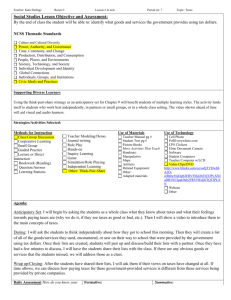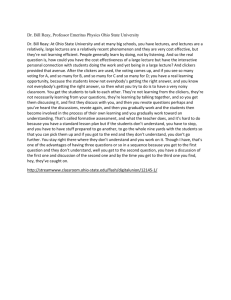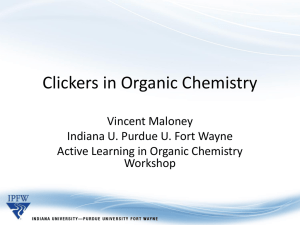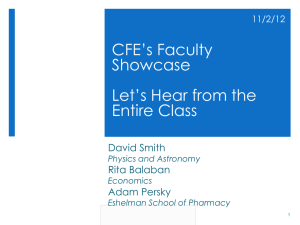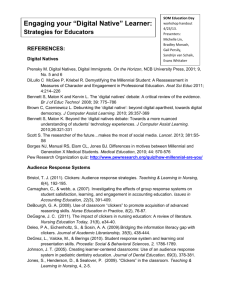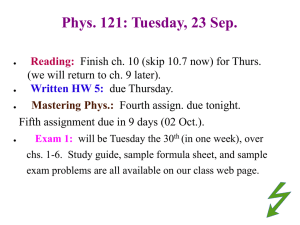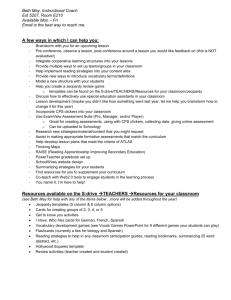2-page proposal file
advertisement
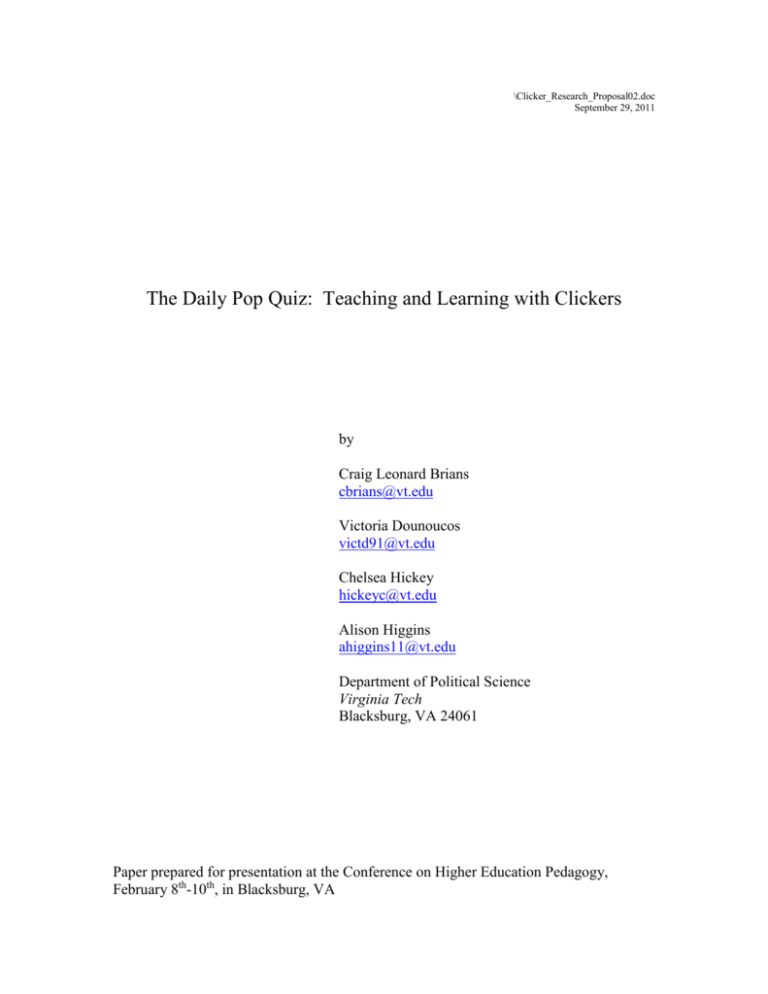
\Clicker_Research_Proposal02.doc September 29, 2011 The Daily Pop Quiz: Teaching and Learning with Clickers by Craig Leonard Brians cbrians@vt.edu Victoria Dounoucos victd91@vt.edu Chelsea Hickey hickeyc@vt.edu Alison Higgins ahiggins11@vt.edu Department of Political Science Virginia Tech Blacksburg, VA 24061 Paper prepared for presentation at the Conference on Higher Education Pedagogy, February 8th-10th, in Blacksburg, VA The Daily Pop Quiz: Teaching and Learning with Clickers Abstract: In recent years, technology has gained a firm foothold in higher education classrooms. The student response system (i.e., clickers) is among the most common teaching technologies incorporated into classrooms today. Given clickers’ growing popularity over the last decade dozens of studies in fields ranging from biology to physics to political science have sought to evaluate clickers’ effects on learning. Whereas much previous research focuses on subjective effects attributed to clickers, this study empirically examines potential mechanisms by which clickers may result in higher student exam achievement, and perhaps even promote learning. Through a combination of student survey data and experimental research, this study teases-out the avenues for increased student performance when using clickers in large classes. The results suggest that more motivated learners react differently to clickers than do those students who simply seek a passing course grade. Literature Review: In recent years, technology has gained a firm foothold in higher education classrooms. The student response system (i.e., clickers) is among the most common teaching technologies incorporated into classrooms today (Immerwahr 2009; Winograd & Cheesman 2007). These personal devices permit students to contribute their individual opinions and quiz responses in real-time during class. Given clickers’ growing popularity over the last decade, particularly among those teaching large enrollment courses, dozens of studies in fields ranging from biology to physics to political science have sought to evaluate clickers’ effects on learning (e.g., Beavers 2010; El-Rady 2006; Salemi 2008; Stuart, Brown, & Draper 2004; Winograd and Cheesman 2007). Previous research generally falls into one of three categories: (1) examples of pedagogical techniques, (2) user perception studies, and (3) quasi-experimental tests of knowledge change. Nearly every study identifies benefits from incorporating clickers into the classroom; however, the causal link between “clicking” and these claimed benefits is left unexamined. Methodology: To address the causal mechanism void in the literature, this paper explicitly studies several competing hypotheses, each seeking to explain exam score improvement (or even learning gains) from clicker use. Exploring this relationship in large classes (i.e., 80 to 300 students), this study empirically examines these potential mechanisms using a range of data: quantitative and qualitative student surveys, experimentally comparing (individual-level) in-class clicker question performance to exam question performance, and focus group responses. 2 Data Analysis and Results: We find that clickers improve students’ performance through several mechanisms: (1) enhanced pre-class preparation, (2) more consistent class attendance, (3) increased classroom participation and attention, (4) opportunity to practice timed testing, and (5) signaling high-priority course content. Additionally, these processes appear to operate simultaneously and interactively, although with different intensities for different students, depending upon a student’s initial motivation level. Discussion/Conclusion: Broadly, we find that most students in a course using clickers (1) place greater value on attendance and therefore retain more knowledge to use on exams, (2) are more likely to look at the readings before class, and (3) demonstrate greater course satisfaction. Using clickers also appears to reduce student distractions in a large lecture course, due to the need to pay attention to frequent, interactive questioning. 3

